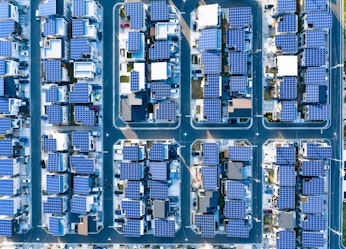

M|O Perspectives
Check back here for our thoughts on the latest developments in our industry.
“Solar Ready” Roofs: Zero Net Energy Starts On Top
Aug 14, 2020
The nationwide mandate to reduce greenhouse gas emissions (GHG) to 40 percent below 1990 levels by 2030 — rolling out under the umbrella of Zero Net Energy (ZNE) — relies heavily on smart solar roofs. (Read our previous blog on ZNE and who’s leading this building revolution.)
In 2013 the Building Energy Efficiency Standards first required that roofs be “solar ready” or designed to handle clean-energy-generating photovoltaics (PV) in the near future. And the future is here.
The latest Building Energy Efficiency Standards were adopted on January 1, 2020, into the California Code of Regulations. They pave the way for demanding that buildings begin to generate enough PV/renewable energy generation to run with limited export to the main electrical grid.
The new standards contain two important measures: 1) mandatory rooftop solar panel installation and 2) a 7 percent energy efficiency requirement above the 2016 CBC that directly impacts residential buildings. That means once renewable energy from solar PV is taken into consideration, the overall energy utilization will be at 53 percent less than the 2016 code.
That’s a dramatic change, especially in residential structures.
Solar Savings on Homes
With the new regulations for PV roofing, it’s estimated right now that a new home would see an additional cost of $9,500, but would save $19,000 in energy and maintenance over 30 years. That’s an increase of approximately $40 per month for the average homebuyer, but an $80 per month savings in energy bills.
Importantly, solar PV manufacturers and installers predict that starting this year, the volume of PV installations will drive prices down so future upfront costs might be half of what’s currently projected, but with the same cost savings.
The reality is that it will always be more cost-effective to reduce a building’s overall energy usage before providing renewable energy. So essentially these measures work toward a high-performance or ZNE building.
But Not Enough for ZNE
However, while pushing for greater sustainability in the built environment, the new code does not achieve the initial goal of bringing residential buildings to Zero Net Energy. Currently, it provides builders some flexibility in how they achieve the ZNE mandate while not over-regulating the market. So, for now, it appears that the onus of achieving ZNE is on owners and developers.
In keeping, the conversation is shifting from ZNE to a carbon reduction goal of zero emissions. Taking into account the current over-production from renewable energy sources during the day and impacts on the existing grid and large utility companies, we’re also seeing a greater emphasis on electrification to reduce overall greenhouse gas emissions.
Currently, most residential buildings are dual fuel: They utilize both electricity and natural gas or other fossil fuels. In an effort to harmonize the electric grid and offset over-generation, California is leaning toward requiring homes to be all-electric.
In fact, in the new code, there will be incentives for battery storage, which can be beneficial to building owners who can afford them and who use “time of use” rates. As with “solar-ready roofs,” it is likely that battery storage will be mandated in future codes.
At Marx|Okubo, we continue to watch the evolution of Zero Net Energy. Clearly, our nation is moving toward better energy storage methods and other means of harmonizing the utility grid. Our engineers are staying ahead of code changes and critical shifts that will affect our clients and the important work we do on their behalf. Please contact us if you have any questions about how ZNE could impact your next project. If you have any questions or would like to talk about this topic more, please contact Gerard Lee.

What we do.
- Owner's Representation
- Property Condition Assessment
- Project Management
- Constructability Reviews
- Repair | Reconstruction
- Facility Condition Assessment
- Construction Loan Monitoring
- Accessibility
- Building Enclosure
- Fire | Life Safety
- Mechanical | Electrical | Plumbing
- ESG | Sustainability & Resiliency
- Structural Engineering
- ASAP® - Automated Structure Alert Program
Marx|Okubo is a national architecture/engineering/construction consulting firm that works with real estate owners, investors and lenders—at every point of the property lifecycle—to evaluate their building projects, solve complex challenges and implement tailored solutions. We help clients understand their projects’ complexities, so they can make more informed decisions and, ultimately, mitigate their risk.




